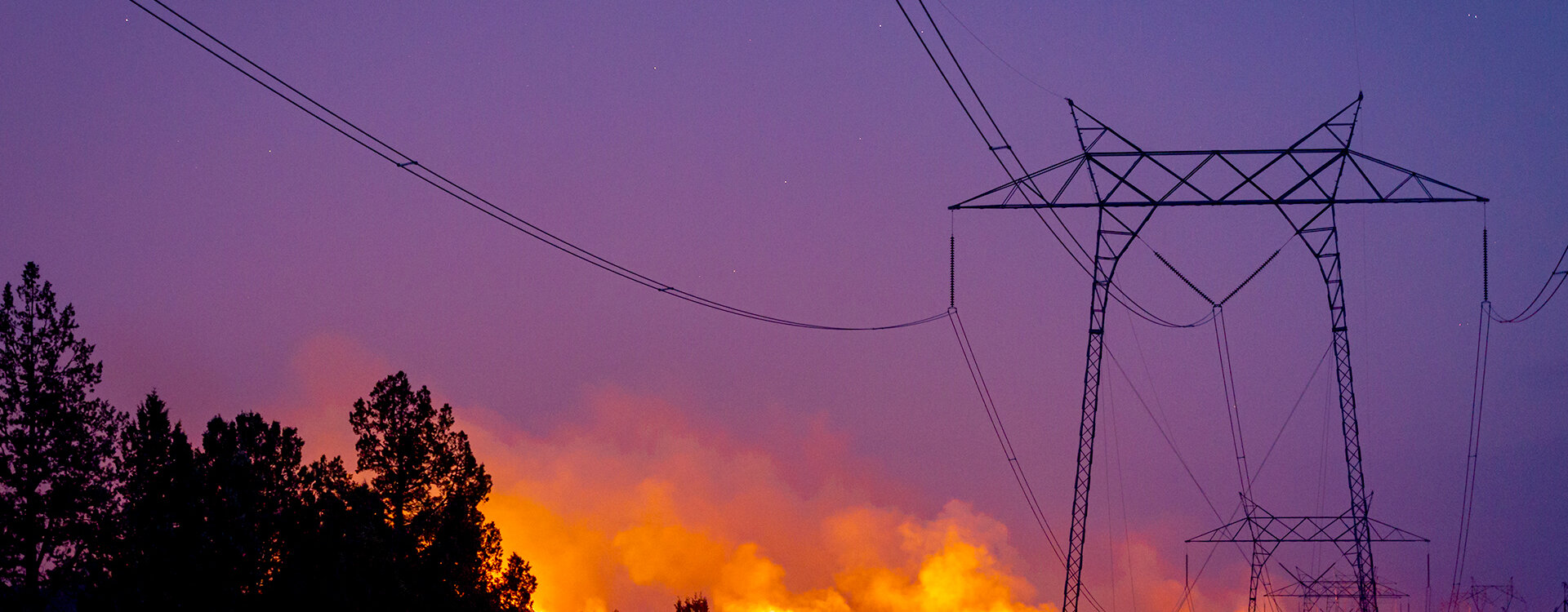
One of the biggest obstacles in achieving resiliency is funding.
Over the last 5 years, 7,874 wildfires have burned in California, destroying approximately 1,274 structures, and costing over 2.5 billion dollars in damages. With wildfires burning well past their usual seasonal timeframe, California's utilities have looked for various ways to prevent wildfires and minimize damage.
Public Safety Power Shutoff (PSPS) events are one of the strategies California's utilities employ to prevent wildfires. A PSPS event is when power to electrical lines that may fail in certain weather conditions are proactively cut. Between 2013 and 2019, 33 PSPS events occurred, averaging about 41 hours of power downtime that affected about 3.2 million customers.
PSPS events have many impacts to communities that stem far beyond just not having access to power. For example, essential facilities like hospitals, police stations, and community centers require power due to their critical operations. According to Michael Wara of the Stanford Wood Institute for the Environment, the economic costs of the average shutoff in one month could approach 2.5 billion dollars.* Specifically, a FEMA-funded study that was published in 2017 by the National Institute of Building Sciences determined that for every one dollar spent on hazard mitigation, the nation can save six dollars in future disaster costs (NIBS 2017). Although many communities are aware of the importance of maintaining power, energy emergencies and natural disasters still occur — with resiliency and stability coming at a price.
The Price of Resilient Infrastructure
One of the biggest obstacles in achieving resiliency is funding. Even when communities understand the importance of having resilient infrastructure and the business case for investments in resiliency is strong, it can be difficult to get everyone on board because many of the associated costs — such as keeping a community safe during an unforeseeable emergency event — are hard to put a true price on.
Oftentimes, during fire season, resiliency can become "out of sight, out of mind," meaning more immediate budget items take priority unless an emergency directly impacts the community and needs to be addressed.
Funding Strategies
Resiliency as a tool in the disaster preparedness toolbox can be funded through different mechanisms, including grants and Resiliency-as-a-Service solutions.
Grants
There are several federal grants that have been made available to help local states and communities through the FEMA Pre-Disaster Mitigation Grant Program. These grants help communities invest in energy efficiency and renewable energy plus storage — which are key strategies in building an energy resilient community.
Some federal government programs are FEMA's Building Resilient Infrastructure and Communities (BRIC) Program and the U.S. Department of Housing and Urban Development's (HUD) Community Development Block Grant Mitigation (CDBG-MIT)
For example, beginning in fiscal year 2020, BRIC will off a reliable stream of funding by leveraging a six percent set-aside mechanism (based on annual disaster relief fund expenditures) to establish a new nationwide mitigation relief fund. It is estimated that an average of $300 million to $500 million will be available to states, tribal territories, and local governments. Although that is a significant amount of money available to put toward disaster relief funds, these types of grants aren't always easy to obtain, and don't always cover all of the costs of resiliency program. However, the grants can be a very helpful resource when developing a funding strategy.
Resiliency-as-a-Service
Augmenting grant money with funds from a community's coffers can be difficult. Most communities turn to low-interest financing like tax-exempt municipal leases. However, with tax revenues down, many local governments are squeezed by debt limitations imposed by their banking covenants. In this instance, many communities turn to private investors to help fund resiliency projects.
Resiliency-as-a-Service provides all of the benefits of resiliency with no upfront cost. When structured properly, many large accounting firms recognize the "as-a-service" model as off-balance sheet, paralleling the power purchase agreement (PPA) model, which has been widely used within the solar industry.
Similar to a PPA, a third party owns, operates, and maintains the infrastructure assets such as solar, battery, back-up generators, etc. and provides the output of those assets "as-a-service" to the community.
By moving resiliency to the other side of the balance sheet, communities are able to avoid impacting their debt ratios and still achieve the benefits of a resilient community. Furthermore, the Resiliency-as-a-Service model goes beyond reducing the risk of available electricity and/or thermal supply. Resiliency-as-a-Service transfers performance risk to the third-party asset owner. Therefore, the community only pays for the measured and verified availability and performance of the system.
In light of the increased threat of natural disasters, achieving resiliency through strategic funding options is essential for communities.
To learn more about preparing your facilities for natural disasters, check out our other articles.
This article was written by a Southland Industries team member.



